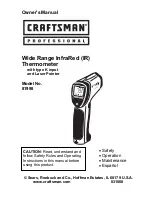
2800 Laura Ln, Middleton WI 53562 | 800.288.9383 Fax: 608.836.9044 | www.tcsbasys.com
23
USER
INTERFACE
done in an attempt to create a unique value. However, users are encouraged to create their own numbering system for
all controllers on the BACnet network.
•
BACnet Wi-Fi
-
Enable/Disable: Turn on and off Wi-Fi communication and related BACnet/IP features.
-
Scan Wi-Fi Networks: Starts a scan for available networks. Enter password.
-
Port: Select the IP port to use for BACnet traffic.
-
Device Instance
: This number must be unique across the entire BACnet network. Users are encouraged to create their
own numbering system for all controllers on their BACnet network.
4.5.2.5 Thermostat Type
Choose heat pump thermostat or conventional thermostat based on the equipment being controlled. Select heat pump
thermostat when direct control of the reversing value is required. When the heat pump thermostat type is selected the B/O
relay is used to control the direction of a reversing valve. By default the relay is energized (closed) when controlling for
cooling.
4.5.2.6 Internal BACnet Explorer
This advanced configuration tool allows browsing and editing of most of the available settings in the UbiquiSTAT, many of
which are not available through the other user interface screens. Each explorer screen shows a single property of a BAC
-
net object. These same object properties can also be viewed over the network with BACnet network tools. See the
for a list of all BACnet objects.
Figure 12
Objects that can be changed have an “Edit” button in the top left corner of the screen that brings up an edit screen ap
-
propriate for the property data type. The edit screen contains a Load Default button, that when touched, loads the default
value into the editor (but does not save the value). If the BACnet object is commandable and its present value is currently
being commanded from the network, then the value field will include the text, “Network Override”.
The following navigation tools allow efficient browsing:
•
Screen Index
: This displays the current object’s position relative to the total number of objects.
•
BACnet Object ID
: This is shown at the top of the screen. This is used to locate the object when accessing it via the
network.
•
Next/Prev
: Advances forward/backward one object at a time. Navigation wraps in both directions.
•
<10/10>
: Advances forward/backward 10 objects at a time. Navigation wraps in both directions.
The internal BACnet Explorer has the following limitations:
•
Only the present value property of objects are shown (or editable), with the exception of the device object, which pres
-
ents the Max Master MS/TP communication property. Therefore, properties such as the relay minimum on/off times and
polarity are not accessible.










































